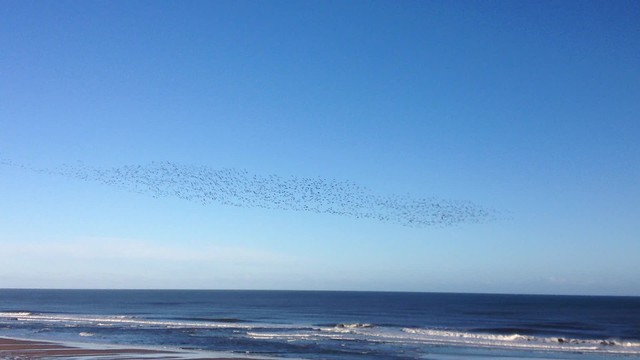A new species for the patch this afternoon and quite unexpected - Raven!
The circumstances were quite fortuitous. I was on the patch for work this afternoon. Our wonderful Coast Care team were working on behalf of National Trust, doing some coppicing in the bushes and I popped down to meet them and thank them for their hard work. After they left I had a quick look on the sea, a very late lunch-break. A black-throated diver was way to the south, a great northern diver flew south and a couple of great crested grebes were on the sea - all good stuff. I got a call from Mark Whittingham to say that he had found a white-fronted goose, probably a Greenland race bird, in the pink-footed flock in the front-field at the farm.
I'd noticed the PFG flock on my way to meet the team and did think they would be worth a look through.
When I got there, the light was awful, looking straight into the setting sun, but I picked up the white-front in the flock. The bill looked orange, but not a 'huge carrot' and the legs looked stout and orange so I assumed Greenland race, but the light was dreadful.
I scanned through the pink foots further south, into better light, looking for something different, and I found something completely different! A huge corvid in amongst the geese, it looked almost as big as the geese! Raven surely. It was facing away but when it turned it's head, the huge deep bill confirmed it as a full patch tick. Species 253 for the patch.
 |
| The brute |
 |
| digi-scoped record shots |
Not a species I was expecting to see, but maybe it should have been more on my radar? The range is increasing and they're breeding on the coast further north from us now. Janet saw one recently at Snab Point, so maybe this was the same bird?
It was quite funny, as when I had been with the Coast Care team earlier, one of them was using a pair of loppers that sounded like the 'cronk' of a raven, which caught me out a couple of times. I mentioned to him that raven would be a new bird for the patch - little did I know what was to come!
Photos of the white-fronted goose circulated by Mark are inconclusive so it might be 'un-raced' until I get a better look. hopefully on the bird race tomorrow.



































